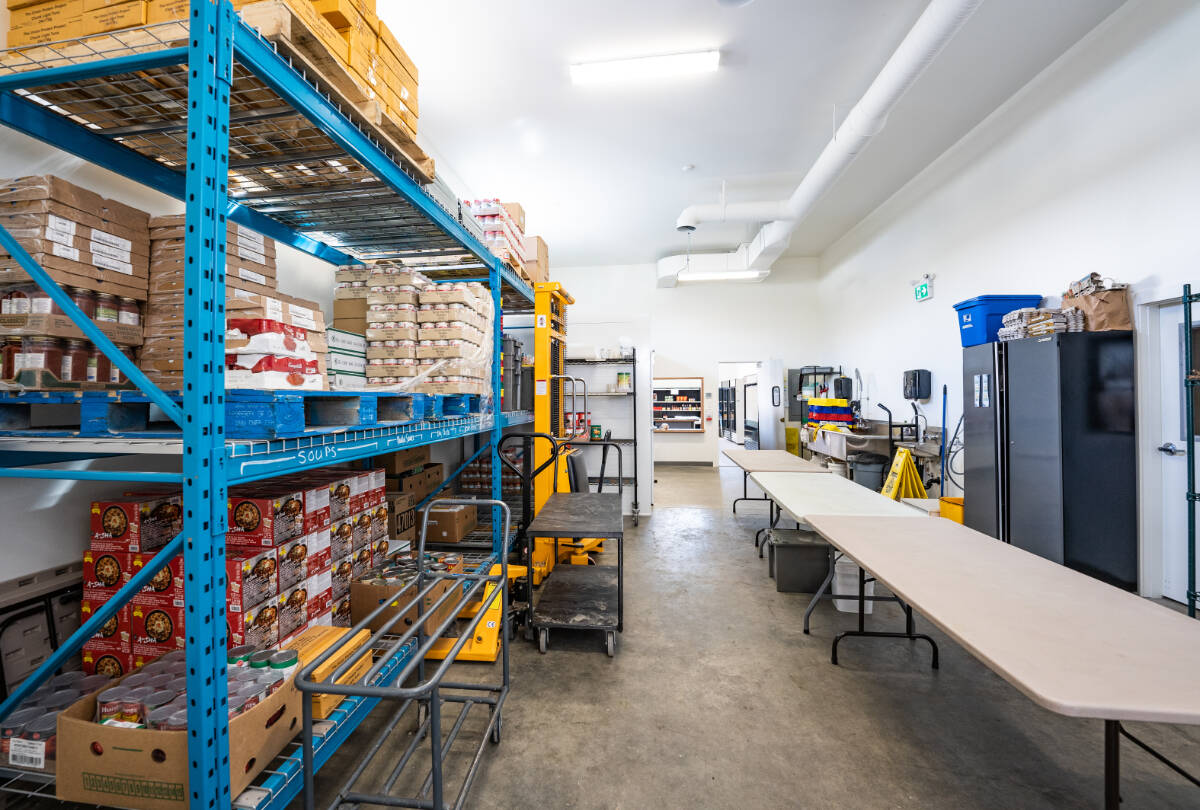Food bank myths: Community Connections debunks common misconceptions

In Revelstoke, Community Connections has operated a food bank for over 20 years, supporting both those entrenched in systemic poverty and those needing temporary support during a tough time. Community Connections photo
Poverty does not always look the same. We’re used to images of people wearing tattered clothes, carrying their few belongings in a shopping cart, but poverty also looks like parents with children, young workers couch surfing or seniors out walking their dog.
With a health crisis, job loss, divorce, traumatic event or loss, poverty can strike anyone, and many of us are just a paycheque or two from needing some serious help to survive.
Community is the solution. Friends, neighbours and community programs, including the food bank, help us through the rough patches. In Revelstoke, Community Connections has operated a food bank for over 20 years, supporting both those entrenched in systemic poverty and those needing temporary support during a tough time.
This may be difficult for the community to see or understand. Here are some misconceptions about the food bank we have heard.
Myth #1: Government funds food banks
The Community Connections food bank is run through grants and donations. Food Banks BC sometimes channels small amounts of money to support local operations, but the food bank does not receive guaranteed or consistent government funding.
Grants from foundations and government programs can help, but are often restricted – perhaps they can be used to purchase food for distribution, for example, but not staff wages or utility bills.
Donations come from private citizens, local organizations and fundraising events. Monthly donations are the favourite, as they provide a consistent and reliable income.
Myth #2: People abuse the food bank, taking food they don’t need
Attending a food bank can be difficult – learning when and where to go, lining up, registering, choosing from limited options and getting that food home. Folks struggle with all kinds of things, including short-term circumstances and long-term disadvantages, that may not be readily apparent solely from looking at them.
An ethical intake process helps create a welcoming, unstigmatized program where staff explain the program and how it works. Folks who feel they fit with the service provide some basic information and learn when to come and what to take. Income information is not required for food bank services, as this practice is unethical and hurtful.
There’s always more to someone’s story than the jacket they wear or the vehicle they arrive in. Often that includes mental health, but the affordability challenges of living in Revelstoke are always part of it.
The food bank is also connected with other social support programs and services and can direct clients to other services to meaningfully address their circumstance.
Myth #3: The food bank building is nice, so you obviously have enough money.
The new food bank facility at the Outreach Building at 416 2nd Street West was built using provincial, federal, CBT and donor funds specifically for infrastructure upgrades and its appearance is separate from the ability to staff it and purchase food.
Bright and accessible for folks with mobility challenges, the space is welcoming and dignified. The side yard garden and gathering space was created using funding specified for outdoor infrastructure upgrades.
Run as a social enterprise, with space rentable to individuals, groups and local food entrepreneurs, the new Neighbourhood Kitchen provides new opportunities for future revenue generation. An equipment lending library lets people borrow food processing tools for at-home use and a chef uses food recovery items and purchased ingredients to create meals for food bank distribution, helping clients meet their nutritional needs.
Myth #4: The food bank distributes only donated food.
Food distributed at the food bank’s three weekly openings combines purchased and donated food. The food bank recovers food from local grocers and retailers daily to be sorted and distributed at the food bank.
Community donations and surplus foods from the National Food Share Program also contribute. The remainder is purchased, requiring grant and donation funds. Food is sourced locally when possible and bought in bulk. The local food bank is also part of a study exploring new cost-effective purchasing options.
Myth #5: The food bank is run by volunteers.
While the Revelstoke food bank uses more than 25 different volunteers each week, it takes two dedicated staff members to recruit and direct volunteers, order food, manage the food bank space, and operate the food recovery program. Additionally, a director manages program funding, organizes fundraisers and oversees communications.
To learn more, visit community-connections.ca and to help, donate today here.
